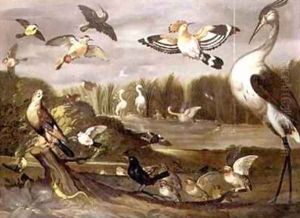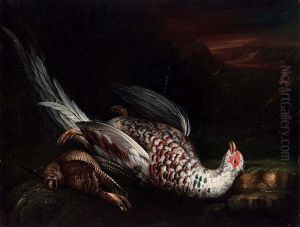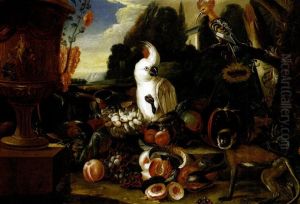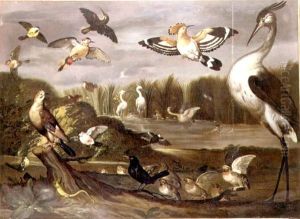Franz de Hamilton Paintings
Franz de Hamilton, sometimes also referred to as Frans Snyders de Hamilton, was a Flemish Baroque painter known for his skill in painting still lifes, particularly game, fruit, and flower pieces. He was born around the year 1600, but details about his early life and training are somewhat obscure. His works, however, suggest that he was influenced by and possibly trained under prominent Flemish artists of the time.
Hamilton's career is marked by his specialization in still lifes, a genre that gained significant popularity in the 17th century. He became part of a tradition of Flemish artists who were celebrated for their detailed and realistic depictions of nature. His paintings often showcased a mastery of texture and an ability to capture the play of light on different surfaces, from the softness of flower petals to the gleam of metal or glass.
While not as widely known as some of his contemporaries like Jan Fyt or Frans Snyders, de Hamilton carved out his own place in the art world of his time. His work is characterized by the use of a rich palette and a preference for compositions that conveyed a sense of abundance and opulence, typical of the Baroque period.
The details of Franz de Hamilton's life are somewhat scant, and many aspects of his biography remain shrouded in mystery, including his exact birthplace and the identity of his teachers. Nevertheless, his paintings have been appreciated for their contribution to the still life genre, and they continue to be studied and admired for their technical proficiency and aesthetic beauty.
Franz de Hamilton died in 1667, leaving behind a body of work that continues to be appreciated for its artistic merit. His paintings can be found in various art collections and museums, offering a glimpse into the rich tradition of Flemish Baroque painting.



